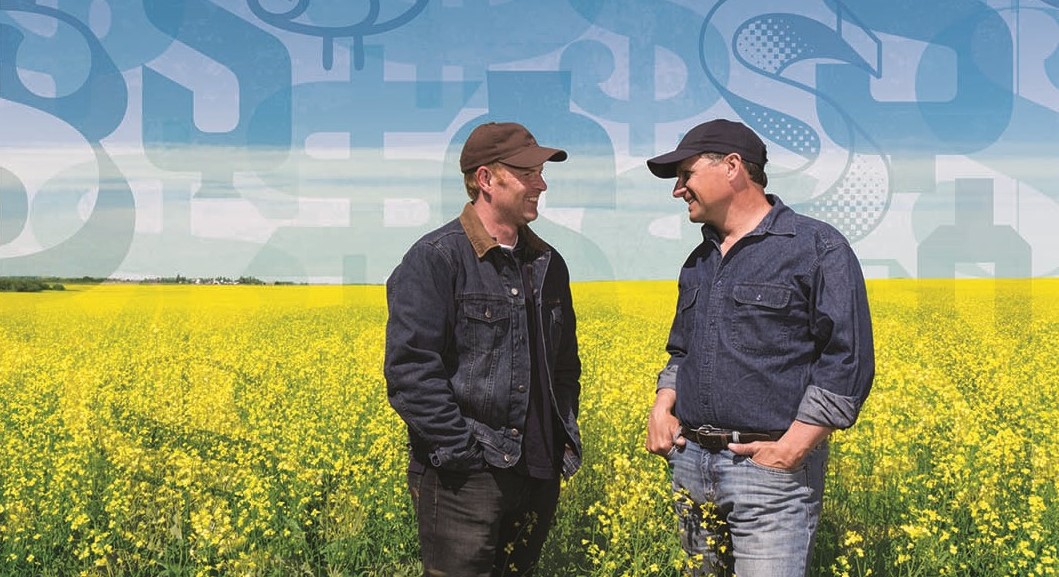The guide to better profits
Crop producers can improve profits when they understand their true cost of production, says Samantha Marcino, Saskatchewan’s acting provincial specialist for oilseed crops. “Production costs, unlike the weather, are a factor under the producer’s control.”
Canola’s appeal is its high estimated gross revenue, but the crop also comes with very high nutrient needs, and therefore a high cost of production. Provincial crop planning guides are excellent resources for farmers to compare their own numbers and make adjustments to improve their results.
“We recommend producers use them as a benchmark, and add in their own operating expenses to determine what is best for their farming operation,” Marcino says.
She stresses that the Saskatchewan guide’s numbers are only estimates and can be extremely variable, depending on individual farms and growing season conditions.
The 2024 guides are posted or will be soon. The 2023 guides estimated strong profitability trends for canola. Saskatchewan predicted the crop to be the most profitable commonly grown field crop – excluding some special crops – while canola also compared favourably to competing crops in Alberta, leading in profitability across a number of growing areas. Manitoba’s 2023 profit guide, however, ranked canola profits only sixth highest.
Identify profit variability
“For the most part, canola continues to be a profitable crop in the rotation,” says Jason Casselman, Canola Council of Canada agronomy specialist for the Peace River region. But that’s not to say every field and acre present ideal conditions for growing the crop. Each field is going to have some its own characteristics and underlying factors. And even within a particular field exists variability.
Water management is a huge part of ensuring land will be profitable, something that can be gleaned from yield maps. Casselman’s also a big advocate of targeted applications of fertilizer, herbicide and fungicide. By spraying some areas but not others, field costs per acre will be lower, and returns better thanks to lower application costs to go with improved yields.
“What I think is interesting is looking at those parts of the field that might need a little bit extra attention to get the best canola crop from the whole field,” he says.
“We recommend producers use them as a benchmark, and add in their own operating expenses to determine what is best for their farming operation.”
— Samantha Marcino
Provincial guides also illustrate differing costs between soil zones. “There are significant regional differences across Saskatchewan,” says Marcino. “Different soiltypes and weather patterns are two big factors affecting crop production.”
Canola yields in black soil zones are historically higher than brown or dark brown soil zones, she points out. For the Saskatchewan guide, target crop yields represent the five-year average of the 80th percentile of production for each crop in that soil zone. “These yields vary greatly depending on the year and producers should be inputting their own average historical yields to get a more accurate target yield,” Marcino says.
Estimated fertility costs are higher in some soil zones, reflecting the higher yield potential. More fertilizer tends to be applied in the black soil zone than the brown soil zone, which comes down to forecast moisture availability. “Fertility on its own without moisture isn’t going to be used by the plant. The amount of fertility that’s applied has to be calculated with the amount of moisture that’s available,” Casselman says.
In some cases, growers can improve profits through split applications of fertilizer, he adds. “Applying all your fertilizer and hoping for the necessary moisture comes at a risk. Splitting it provides some more assurance that their fertilizer investment is going to pay off,” Casselman says. “A grower can really take advantage of a split application on fertility based on the amount of moisture that they’re getting.”
By implementing split fertilizer applications on his own farm, Casselman was able to bring his cost of production below Alberta’s guide estimates.
“We did some top-dressing after the crop had been seeded, and at the end of May came back with some extra nitrogen,” he says. “So, looking at the cost of production comparison, the fertilizer values that were in the Alberta charts were a little bit higher.”
Casselman found extra savings by purchasing urea fertilizer at a discount after seeding had wrapped up.
Other guide benefits
Casselman uses the guide’s custom work cost estimates to give him an idea of what custom rates should be for his budgeting purposes. This analysis also helps him determine if it makes more financial sense to own a particular piece of machinery or equipment.
The guides can also assist growers to pick out which areas of their farms are contributing to profitability and which aren’t, he says. If it’s owned property, a farmer might look at culling certain acres or trying to improve them, by means of, say, addressing drainage issues or identifying nutrient limitations.
“That’s part of the calculation on profitability: can you afford to farm that land or can you afford to improve that land? And what does it take? Can you make it better or should you drop it?” Casselman asks.
These calculations may also prove useful in negotiating longer-term rental deals in order to secure the time needed to earn back land improvement investments through higher production, he explains.





